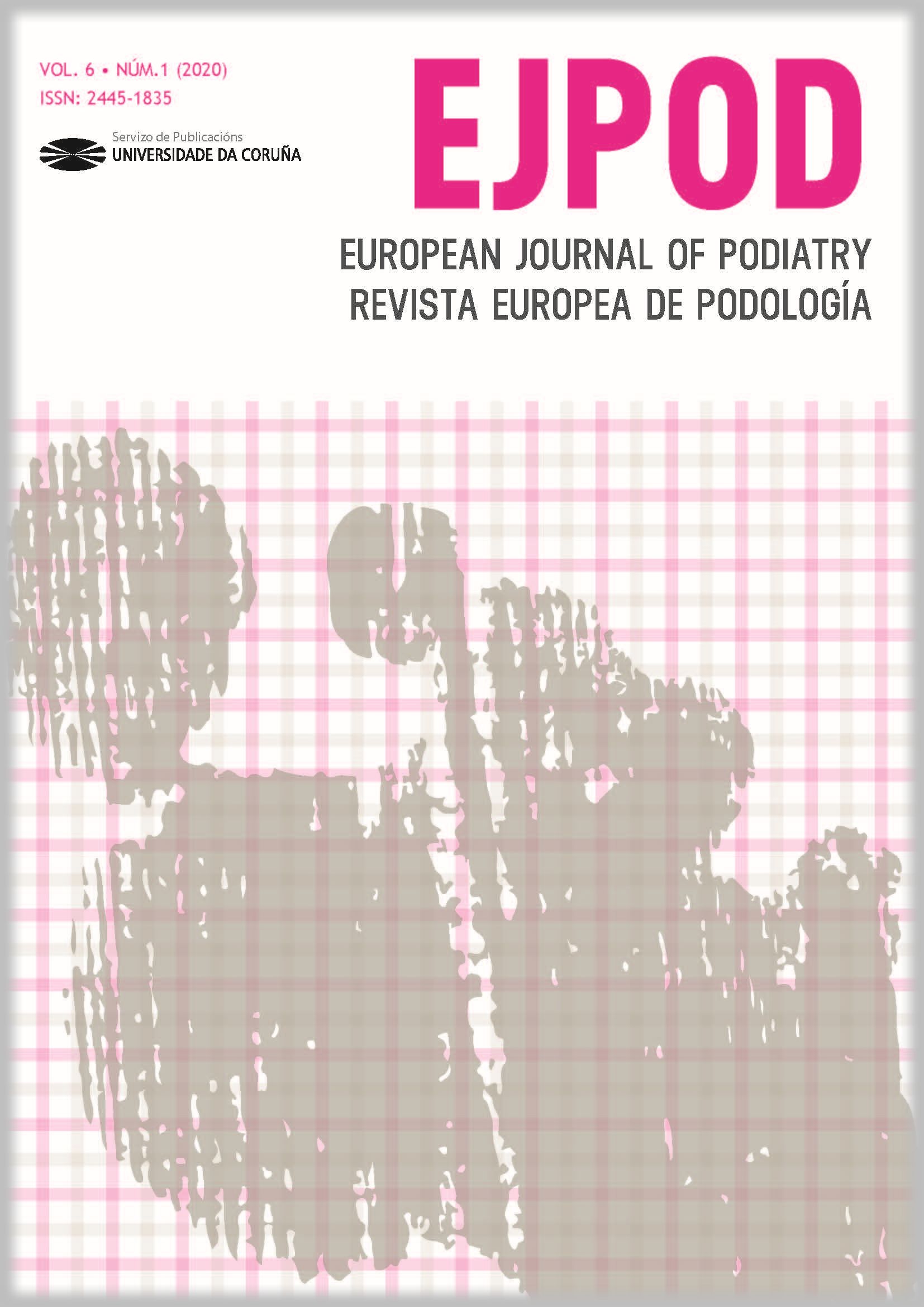Relevance of onychodystrophy in patients with chronic venous disease
Main Article Content
Abstract
Objective: The purpose was to evaluate the relation between onychodystrophy and chronic venous disorder.
Methods: An observational and prospective study of 83 patients aged 40-84 with chronic venous disorder (ranging C0-C6 in CEAP classification) was performed. Nails were assessed using photographs and through onychoscopy.
Results: Women are more frequently affected by onychodystrophy than men. Both lower limbs are equally affected by onychodystrophy. The first toe is more affected by onychodystrophy than the third, fourth and fifth. In the left lower limb, the fifth toe is more affected than the second and fourth. In the right lower limb, the first toe is more affected than the third, fourth and fifth. A positive association exists between onychodystrophy in feet and chronic venous disorder.
Conclusion: Onychodystrophy affects mostly women, it is equally found in both lower limbs, the first and the fifth toe tend to be the most affected and its prevalence increases according to the degree of severity of chronic venous disorder.
Keywords:
Downloads
Article Details
References
Sarteel AM, Merlen JF, Larere J. L´ongle en pathologie vasculaire.J Mal Vasc.1985; 10 Suppl. A: 199-206.
Flint WW, Cain JD. Nail and skin disorders of the foot. Med Clin North Am. 2014; 98 (2): 213-25.
Scher RK, Daniel CR III. Nails: therapy, diagnosis, surgery. 2nd ed. Philadelphia: W.B Saunders Company; 1997.
Baran R, Dawber R, Haneke E, Tosti A, Bristow I. A text atlas of nail disorders: techniques in investigation and diagnosis. 3rd ed. London: Martin Dunitz; 2003.
Tosti A, Daniel R, Piraccini BM, Iorizzo M. Color atlas of nails. Berlin: Springer; 2010.
Allevato MA. Diseases mimicking onychomycosis.ClinDermatol. 2010; 28(2): 164-77.
Helfand A. Foot problems in older patients: a focused podogeriatric assessment study in ambulatory care. J Am Podiatr Med Assoc. 2004; 94 (3): 293-304.
Kurz X, Kahn SR, Abenhaim L, Clement D, Norgren L, Baccaglini U, et al. Chronic venous disorders of the leg: epidemiology, outcomes, diagnosis and management. Summary of an evidence-based report of the VEINES task force.Venous Insufficiency Epidemiologic and Economic Studies.IntAngiol. 1999; 18(2): 83-102.
Gloviczki P, Comerota AJ, Dalsing MC, Eklof BG, Gillespie DL, Gloviczki ML, et al. The care of patients with varicose veins and associated chronic venous diseases: Clinical practice guidelines of the Society for Vascular Surgery and the American Venous Forum. J Vasc Surg. 2011; 53 (5 Suppl): 2S-48S.
Eklof B, Perrin M, Delis KT, Rutherford RB, Gloviczki P, American Venous F, et al. Updated terminology of chronic venous disorders: the VEIN-TERM transatlantic interdisciplinary consensus document. J Vasc Surg. 2009; 49(2): 498-501.
Eklof B, Rutherford RB, Bergan JJ, Carpentier PH, Gloviczki P, Kistner R. L, et al. Revision of the CEAP classification for chronic venous disorders: consensus statement. J Vasc Surg. 2004; 40(6): 1248-52.
Widmer LK. ed. Peripheral venous disorders: prevalence and socio-medical importance. Basel study III. Bern, Switzerland: Verlag Hans Huber, 1978.
Bradbury A, Evans C, Allan P, et al. What are the symptoms of varicose veins? Edinburgh vein study cross-sectional population survey. BMJ 1999; 318 (7180): 353-6.
Escudero Rodriguez JR, Fernandez Quesada F, Bellmunt Motoya S. Prevalencia y caracterısticas de la enfermedad venosa crónica en pacientes atendidos an atención primaria en España: resultados del estudio internacional Vein Consult Program. Cir Esp. 2014; 92(8): 539-46.
Rutherford RB. Vascular surgery. 6th ed. Philadelphia: Elsevier Saunders; 2005.
Baran R, Camacho FM, Mascaró JM, editores. Onicología. Biología y alteraciones de la unidad ungueal. Madrid: Grupo Aula Médica; 2006.
Lewin K. The normal finger nail.Br J Dermatol.1965; 77: 421-30.
Piraccini BM, Balestri R, Starace M, Rech G. Nail digital dermoscopy (ony¬choscopy) in the diagnosis of onychomycosis.J Eur Acad Dermatol Venereol. 2013; 27(4): 509-13.
El-HoshyKH, Abdel Hay RM, El-Sherif RH, SalahEldin M, Moussa MF. Nail dermoscopy is a helpful tool in the diagnosis of onychomycosis: a case con¬trol study. Eur J Dermatol. 2015; 25(5): 494–5.
Obesity: preventing and managing the global epidemic. Report of a WHO Consultation [Internet]. WHO Consultation on Obesity; 1997 June 3-5; Geneva. Geneva: World Health Organization; 2000 [acceso 7 de julio de 2018]. Disponible en: http://whqlibdoc.who.int/trs/WHO_TRS_894.pdf


